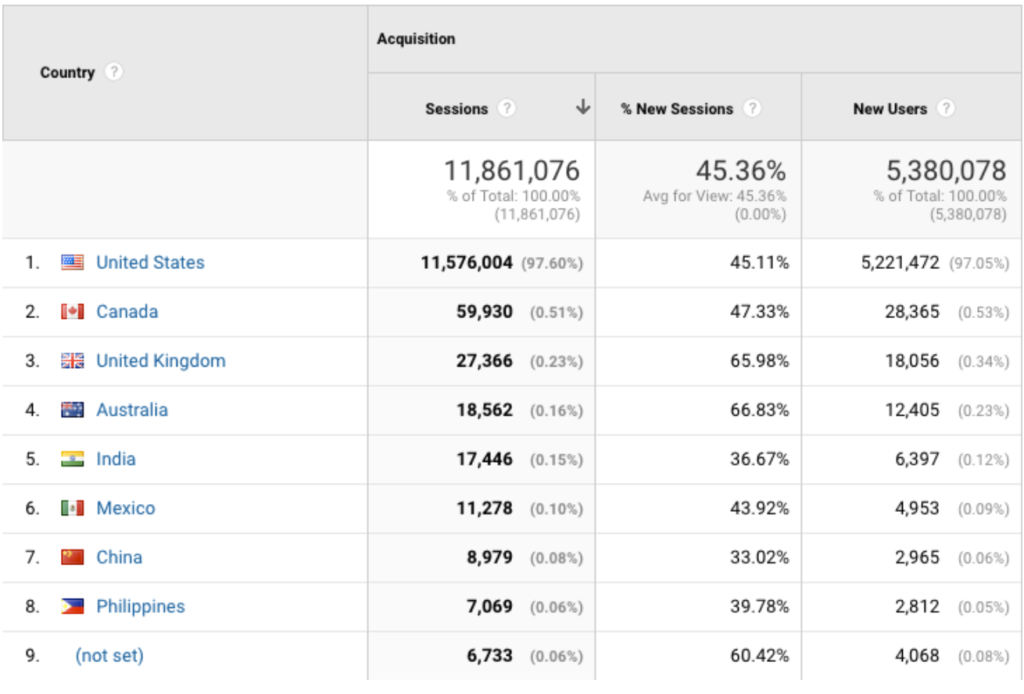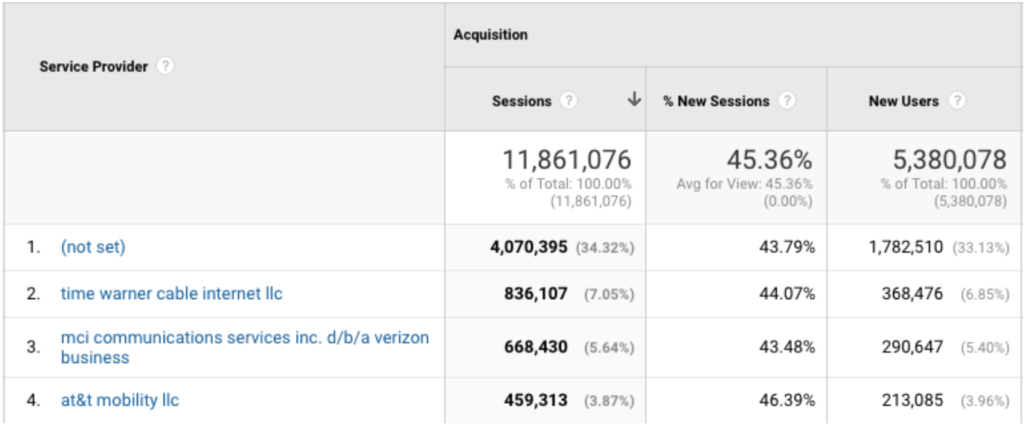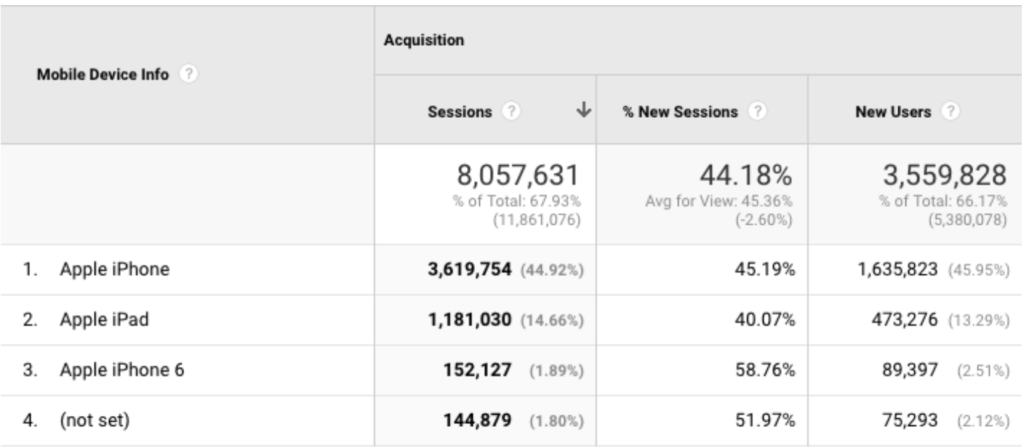
We’ve all seen it: The dreaded (not set) showing up in our favorite Google Analytics report. We’ve also heard contradictory statements about (not set) being OK, or about (not set) meaning there’s a catastrophic coding error. Well, which one is it!?
How about both!
Some reports in Google Analytics are going to have (not set) and there’s absolutely nothing you can do, while other instances mean there is in fact a coding error or change that could improve your reports. Today, I’m going to walk you through some of the reports where it’s acceptable and common, as well as reports where (not set) should not be present. Let’s begin!
Audience Reports
Audience reports are easy. The general rule is that (not set) is out of our control in these reports. While not perfect, Google incorporates a number of cookies, third-party services, and internal data to determine a user’s age, gender, interests, etc. For a variety of reasons, certain reports simply won’t populate certain pieces of data. Perhaps the user has disabled cookies, turned off javascript, or they’re accessing your site via secure proxies or the Tor browser. Regardless, (not set) will commonly populate in the following Audience Reports and, unfortunately, my only recommendation is to ignore those rows. Here are the most common:
Language
While (not set) is often under .1%, certain users will not have a language assigned to them by Google.
Location
Hopefully the percentage of users with a (not set) location is small. It’s common to see in reports, but is also often under .1% of users.

Browser
Like Language & Location reports, (not set) will likely show up in your Technology > Browser report, but should be under .1% of users.
Network
Here’s where it gets a bit more interesting. In most cases, (not set) will be the first result in your Technology > Network report. 30-40% is common:

Devices
Like the other Audience reports, don’t fret if you see (not set) in your Mobile > Devices report. Somewhere between 1 and 5% is common:

Acquisition Reports
Queries
Most of your Acquisition Reports should not have (not set) present. But by far the most common report it will be present in is your Search Console > Queries report. These reports are only available if you’ve linked your Google Search Console to GA. If you have, you’ll notice a fairly high percentage (40-60%) of queries are (not set). Yet, in Search Console, there are no (not set) keywords. What gives?
According to John Mueller of Google, “… the difference [between GA & Search Console] is essentially queries that we filter out, and in Search Console we don’t show them separately whereas in Google Analytics we chose to call them (not set).”
So, you’ll at least be able to determine the percentage of searches Google filtered out in your Search Console, but there’s nothing you can do here to avoid (not set).

Behavior Reports
Landing Page
Similar to your Acquisition Reports, nearly all of your Behavior reports should be clean and void of (not set). But of course there’s an exception!
It’s fairly common to see (not set) in the Site Content > Landing Pages report. This typically occurs when a user starts a new session with an event, not a pageview, so the session has a (not set) landing page. One common example is when the session duration times out but a user still has the website open in another tab or window, then revisits that tab and fires an event first (such as a product impression, hover event, or ecommerce event).
While it’s frustrating to see a landing page that isn’t set, this is yet another example of a report where you cannot avoid (not set). You can increase your session duration to decrease the percentage of (not set) landing pages, but that’s not recommended since it will affect a lot of other data points including bounce rate, time on site, average session duration, etc.
Conversion Reports
Reverse Goal Path
Conversion reports are littered with (not set), especially compared to Audience and Acquisition Reports. But most are not a concern, including the Goals > Reverse Goal Path report. Put simply: there isn’t always a URL/step prior to a goal completion, so (not set) will often show up for “Goal Previous Step 1,” “Goal Previous Step 2,” etc.
Smart Goals
This one’s interesting. If you’re looking at a date range that does not include the day you’re looking at the report, (not set) will not be present. You’ll see something like this:

But if you’re looking at a date range that includes the day you’re looking at the report, (not set) may be present. You’ll also see this warning:

Product List Name
Up to this point, (not set) is, for the most part, unavoidable. But if you see a (not set) product list name, then we have an issue.
Typically (not set) will populate the Ecommerce > Product List Name if the product list changed somewhere in the checkout process. For example, if the product list is set on click, and either the detail action, add to cart, or checkout step fires a different product list name, (not set) will be present. We recommend only firing the product list name on product click and then leaving it out of future dataLayer pushes.
Order Coupon & Product Coupon
Both of these reports fall under the Ecommerce > Marketing reports. If you see (not set) here, never fear! These 2 reports will likely show a majority of Ecommerce transactions as (not set), simply because if no product-level or order-level coupons were applied, then no coupon was set! You can safely ignore these.
There are a handful of other reports where (not set) may be present, but this post covers the most common I’ve encountered and been asked about. If you’d like me to investigate your (not set) issue, shoot me a message at jimmy [at] infotrustllc.com, or comment on this post.
Happy Reporting!

